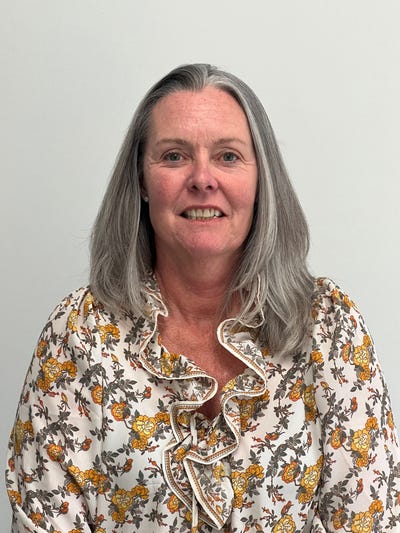Successful mentorship between investors and CEOs hangs on respectSuccessful mentorship between investors and CEOs hangs on respect
The unavoidable tension between effective mentorship between investors and CEOs is hard, but possible through mutual respect and understanding.
November 15, 2024

Is there an invisible barrier between CEOs and investors, and whether there is or isn’t, can a mutual mentorship be had? That was the inspiration for a panel at BIO-Europe in Stockholm, Sweden.
Renee Lucander, CEO of rare disease developer Calliditas Therapeutics, focused on her experiences with multiple types of deals, global investors, boards, commercial approvals, and more to tackle what mentorship means. “It should be a relationship where you can truly share your experiences, as well as try to improve yourself in your role—whether your role is an investor or CEO. And both need to be more open about the challenges each face.”
As a non-profit institute that funds translational science in Denmark, BioInnovation Institute’s chief international officer, Bobby Soni, remarked that mentoring in this industry is very important because the totality of work is extremely difficult.
Anta Gkelou, partner, Sofinnova Partners, echoed Soni’s comments. “I don't think I would have made it through this evolution in my career if there were not mentorship around me,” she said of her seven years in the industry with Sofinnova. As the only current investor on the panel, Gkelou explained how the firm speaks “more often to a CEO than other members of our investment team, especially in the early stages. We choose the people we want to partner with because we think it will be a lifelong experience that goes well, and in the end is a success story. And it must be a two-way relationship.”
The conversation delved into the power dynamic associated with a mentorship relationship. The stages of said relationships can range from career-related, age/or experience-related, role-related, as well as financially drive. However, in all cases the bottom line is the respect for the expertise the other party can bring.
Experience-related dynamic
The delicate nature of balancing the relationship between an investor who does not have many years of experience and a well-seasoned CEO from a large or mid-sized pharma company can be effectively managed through various means.
“Having a junior investor sit down and ask the CEO questions and be genuinely interested in the business, in the operation of the business, is key for building that kind of relationship,” said Lucander.
Conversely, she explained how the CEO may not know everything and investors might see the environment in a broader context. CEOs should therefore ask investors how they see the company’s position and what risks are related to a broader view,
“If you realize that you have different skills, and [are] genuinely interested in what you can learn, either about the business or the broader context that you're operating in, it’s more collaborative. It’s a better discussion than one person who is in charge of operation and the other is coming in with the money.”
In BioInnovation Institute’s case, Soni noted the age/experience dynamic. They hire young staff for less pay by offering the benefit of the real responsibility working with their start-ups. However, many of those founders are very experienced, and potentially older scientists, so the dynamic can be strained.
Soni provided the audience with some advice that he offers to these team members. He reminds his colleagues that they are the finance expert in the relationship and if they respect the scientist and “everything this person can do, and stay true to the idea that you know something as well [then] that can become mentorship.”
Role-based dynamic
Boards serve a distinct purpose for companies, thus there are dynamics within the board itself. For example, if an experienced CEO of another company is on the board with a younger investor, a shared board experience could lead to a mentorship.
Lucander said, “Under that relationship, it will benefit both parties, as well as the company that you're on the board of.”
On the other hand, when the board has a junior person with no mandate but to fill the chair, that can be frustrating for the CEO.
Another dynamic concerns first time biotech CEOs and venture investors on the board. According to Soni, CEOs have told him they feel manipulated by the investor and posed the following questions to his fellow panelists: “How do [investors] take on this mentorship without being manipulated? Are the investors monitoring return on investments or are they providing mentorship to these CEOs?”
Lucander responded that the board chair serves as the role between the investor and the CEO, to avoid conflict.
Financial dynamic
Lucander gave a nod to the inherent strain between an investor and a CEO, given that the investor provides money, until they do not want to provide more. Or they support you until they want to replace management. Though she said the tension is quite healthy, she stated, “There’s nothing wrong with it, but we need to be clear on what it is and what task does everyone have in that relationship.”
Soni provided the theory that VCs have a lot of power up to the moment the money is in the bank account of the company, at which point the CEO has control.
“Unfortunately, the boardroom then turns into a room of people who are powerless. And they're not used to that, because the only power one has at that moment is to say no, I don't want to give you more money. Or no, you're not a CEO. Everything else is support. There's a core dynamic around, what is the VC role once the money is independent?”
Feedback loops
After the dynamics have been identified and the respect factored in, the panel shared that feedback for CEOs and investors is very important. All agreed that having a feedback loop allowed the parties to learn from their mentoring and conversations experiences.
For BioInnovation Institute, Soni explained that as the entity that lends company’s money, they may not be very keen on providing negative feedback and it is difficult to understand how their VC network is performing with founders. To that end, they are building a more formal system so founders can provide feedback on their VC sessions. “This is the reverse feedback system, where now startups are talking about VCs and how good they were in helping them, and we think that’s helpful.”
Read more about:
EBD Events








